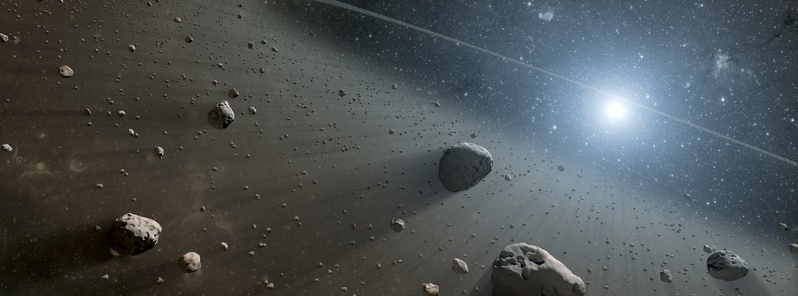New desktop app with potential to increase asteroid detection now available to public

A software application based on an algorithm created by a NASA challenge with the potential to increase the number of new asteroid discoveries by amateur astronomers is now available to the public. The analysis of images using this algorithm showed a 15% increase in positive identification of new asteroids.
During a panel held on Sunday, March 15, 2015 at the South by Southwest Festival in Austin, Texas, NASA representatives discussed how citizen scientists have made a difference in asteroid hunting. They also announced the release of a desktop software application developed by NASA in partnership with Planetary Resources, Inc., of Redmond, Washington. The application is based on an Asteroid Data Hunter-derived algorithm that analyzes images for potential asteroids. It’s a tool that can be used by amateur astronomers and citizen scientists which can now be downloaded here. There are currently only Windows and Mac versions, Linux version is coming soon.
The Asteroid Data Hunter challenge was part of NASA’s Asteroid Grand Challenge. The data hunter contest series, which was conducted in partnership with Planetary Resources under a Space Act Agreement, was announced at the 2014 South by Southwest Festival and concluded in December 2014. The series offered a total of $55,000 in awards for participants to develop significantly improved algorithms to identify asteroids in images captured by ground-based telescopes. The winning solutions of each piece of the contest combined to create an application using the best algorithm that increased the detection sensitivity, minimized the number of false positives, ignored imperfections in the data, and ran effectively on all computer systems.
“The Asteroid Grand Challenge is seeking non-traditional partnerships to bring the citizen science and space enthusiast community into NASA’s work,” said Jason Kessler, program executive for NASA’s Asteroid Grand Challenge. “The Asteroid Data Hunter challenge has been successful beyond our hopes, creating something that makes a tangible difference to asteroid hunting astronomers and highlights the possibility for more people to play a role in protecting our planet.”
The data hunter challenge incorporated data provided by the Minor Planet Center (MPC), at the Harvard-Smithsonian Center for Astrophysics in Cambridge, Massachusetts, and images provided by the Catalina Sky Survey, an astronomical survey project run by the University of Arizona, Tucson, and focused on the discovery and study of near-Earth asteroids and comets.
Astronomers find asteroids by taking images of the same place in the sky and looking for star-like objects that move between frames, an approach that has been used since before Pluto was discovered in 1930. With more telescopes scanning the sky, the ever-increasing volume of data makes it impossible for astronomers to verify each detection by hand. This new algorithm gives astronomers the ability to use computers to autonomously and rapidly check the images and determine which objects are suitable for follow up, which leads to finding more asteroids than previously possible.
“The beauty of such archives is that the data doesn't grow stale, and with novel approaches, techniques and algorithms, they can be harvested for new information. The participants of the Asteroid Data Hunter challenge did just that, probing observations of the night sky for new asteroids that might have slipped through the software cracks the first time the images were analyzed,” said Jose Luis Galache of the MPC. “Moreover, this software can now be used to analyze new images and is available to any observer who wants to use it. The Minor Planet Center applauds these efforts to provide superior tools to all, and looks forward to receiving new asteroid observations generated with them.”
The desktop software application is free and can be used on any basic desktop or laptop computer. Amateur astronomers may take images from their telescopes and analyze them with the application. The application will tell the user whether a matching asteroid record exists and offer a way to report new findings to the Minor Planet Center, which then confirms and archives new discoveries.
The new asteroid hunting application can be downloaded at: http://topcoder.com/asteroids
Source: NASA
Featured image credit: NASA/ESA

Commenting rules and guidelines
We value the thoughts and opinions of our readers and welcome healthy discussions on our website. In order to maintain a respectful and positive community, we ask that all commenters follow these rules:
We reserve the right to remove any comments that violate these rules. By commenting on our website, you agree to abide by these guidelines. Thank you for helping to create a positive and welcoming environment for all.